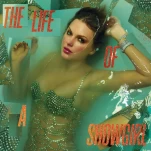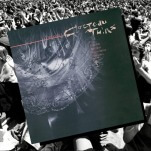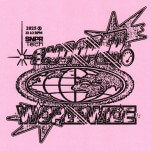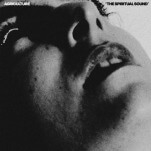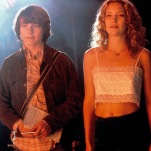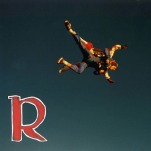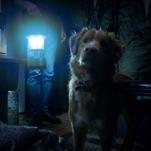The 20 Best Album Reissues of 2022
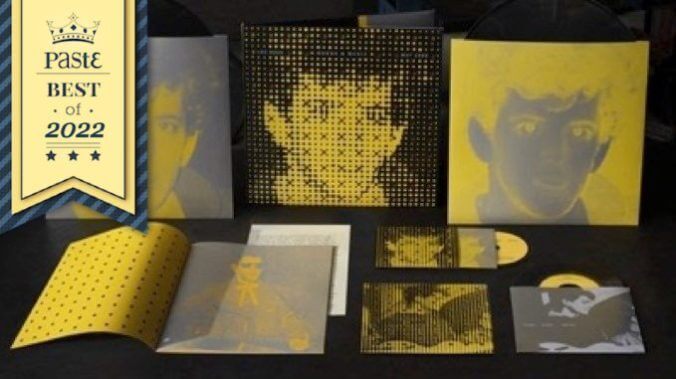
As physical media becomes more of a luxury than a necessity for music fans, a beautifully packaged, lovingly remastered and thoughtfully enhanced reissue becomes all the more special. Labels seem to be continually one-upping each other in that department, pulling albums from their catalog and creating something new, whether repackaging an iconic record or shining a light on an overlooked gem.
We’ve already taken a look at the Best Boxed Sets of 2022 and the lines between the two can be blurry, so if you don’t find your favorite here, check our other list. Here, in alphabetical order, are the 20 best album reissues of 2022:
Cat Stevens: Harold and Maude (Island / UMC / Cat-o-Log)
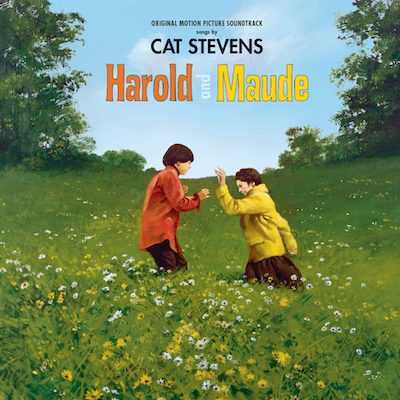
In spite of the very vocal demand for it, Cat Stevens was, until recently, adamant that there not be a soundtrack to Harold and Maude. Though the film was filled with his music, the singer/songwriter didn’t feel it fair to make fans purchase an album that featured only two new songs to go along with previously released tracks. Cameron Crowe changed all that in 2007 when he released a limited edition version of the soundtrack on his label Vinyl Films. 15 years later, Island Records has finally given this music a wide-release with this 50th anniversary edition that has been expanded to include snippets of dialogue and some incidental music from the film. While my heart of hearts would rather have just the Stevens tunes, including the film’s joyous theme “If You Want To Sing Out, Sing Out,” this is a great package that sounds fantastic and is packaged with a thick booklet that details the experiences of bringing the music to the movie and its lingering impact on pop culture. —Robert Ham
The Clash: Combat Rock

Combat Rock, the final album to feature the “classic” lineup of The Clash, was divisive enough upon its release in 1982 due to its far-reaching mixture of musical elements. Dub, hip-hop, folk, Beat poetry and rock were stitched together into a moth-eaten quilt that barely kept the skinny Brits warm as they faced the slings and arrows of punks and confused critics. The record also managed to turn the quartet into stars thanks to club-ready hit “Rock The Casbah” and Mick Jones’ fabulous “Should I Stay or Should I Go.” History has been kind to Combat Rock since as the group’s genre-hopping experiments are now de rigeur among today’s modern artists. Which only makes this 40th anniversary reissue that much nicer to have on the shelves. A second disc of material from the era, dubbed The People’s Hall, turns the record into a proper sequel to their equally dynamic and derided 1980 album Sandinista! through further musical wormhole explorations like “Futura 2000,” a collaboration with the titular graffiti artist, an even spacier mix of “Sean Flynn” and a swinging tune called “Idle in Kangaroo Court.” —Robert Ham
The Cure: Wish 30th-Anniversary Deluxe Edition
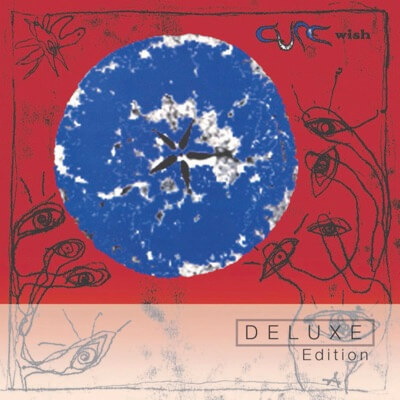
Ironically, the less-is-more axiom often holds true in the pursuit of the ideal deluxe reissue. This three-CD edition of The Cure’s follow-up to Disintegration doesn’t come stuffed to the gills with bonus material and yet it doesn’t leave the listener wanting for more. In fact, the new and expanded Wish provides a more-than-adequate sense of context for a landmark title in The Cure’s discography. On first glance, the choice not to add an entire live show might seem curious from a band that’s celebrated for its marathon-length live sets, but that’s arguably just as well. (Also, the 1993 live album Show turns 30 next year, so one presumes that any unearthed live recordings from this period might surface at that point.) The fact is, an exquisitely tasteful Abbey Road remaster and a heap of demos are enough—especially since they flatter and augment the original release rather nicely. —Saby Reyes-Kulkarni
Duet Emmo: Or So It Seems
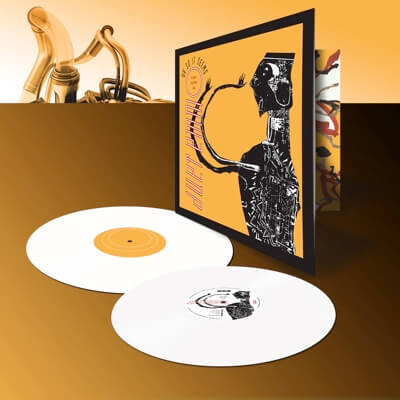
For the uninitiated, Duet Emmo is a collaboration between Graham Lewis and Bruce Gilbert of Wire—who had been recording as a duo under the name Dome—and Daniel Miller, the man behind The Normal and founder of Mute Records. (The project name is an amalgam of Dome and Mute.) The trio got together in late 1982 to experiment in the studio, leading to a single full-length that explores and explodes their interests in electronic music, drone and art pop. The album seems to be slowly dissolving as it moves forward with the proto-industrial pieces on side A giving way to quietly unsettling instrumentals on the flip. It all sounds even more mind-altering on this vinyl edition thanks to the remastering work of Stefan Betke (aka Pole) and includes, on one side of a second disc, a remix of the album’s title track (originally released as a B-side) that takes the original song to fresher, druggier zones. —Robert Ham
The Flaming Lips: Yoshimi Battles the Pink Robots 20th-Anniversary Deluxe Edition
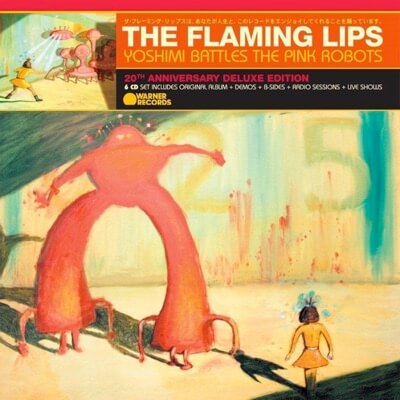
The Rhino Records website is such a no-brainer when you’re looking for stocking stuffers that the company might as well incorporate Santa Claus into its logo. And this six-CD treatment of The Flaming Lips’ career-defining follow-up to The Soft Bulletin exemplifies why Rhino has long been the standard by which other reissues are measured. Mercifully, though the new and expanded Yoshimi comes crammed with bonus material, it doesn’t come in an awkward, oversized package. Six discs comprising 7 hours’ of music, a poster and a commentary-filled booklet all fit neatly on your shelf alongside the rest of your CD collection. The dimensions of this set honor the beauty and character of the original release—augmenting the now-classic album cover with eight additional paintings—and yet the presentation lacks even a hint of pretense. Moreover, the bonus material is judiciously laid out for optimal enjoyment as a series of multiple sit-down listens. A set of demos, for example, appears on the main disc alongside the album itself, but it’s an appropriate move because the two sets of tracks actually flow together. Which is not to say that there isn’t a lot to sift through here. The EPs Fight Test and Ego Tripping at the Gates of Hell still swerve all over the road as much as they did in 2003, but the effort to achieve coherence really comes across, especially with the copious amounts of (well-recorded!) live material. Ultimately, this new beefed-up Yoshimi proves that a glut of bonus content doesn’t have to be work. And extra kudos to Rhino for capping the price at under 50 dollars. —Saby Reyes-Kulkarni
Harold Budd: The Pavilion Of Dreams
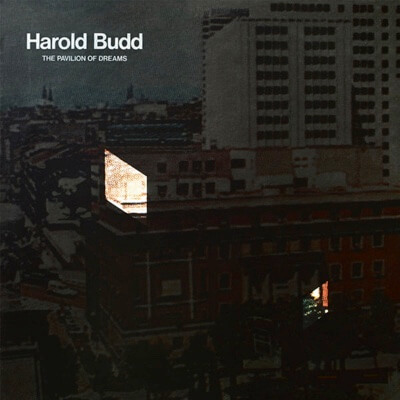
The reissue of the second album by Harold Budd is the perfect reminder of what we lost when the renowned composer and musician passed away earlier this year. Originally released in 1978 through Brian Eno’s short lived imprint Obscure Records, this gorgeous collection introduced a startling talent to a wider audience and laid the foundation for the next three decades of Budd’s work molding Asian and African influences into Western forms like classical, jazz and ambient. The four tracks are a glittering sea of sound that stretches on for miles, settling listeners into the rhythm of the waves with long chords and the right application of silence. The album also boasts a cast list of future legends of the British avant community like Gavin Bryars, Michael Nyman, Jo Julian and Howard Rees. Superior Viaduct continues doing the Lord’s work, bringing this back to vinyl—with the original artwork—for the first time since 1987. —Robert Ham
John Coltrane: ”Live” At The Village Vanguard / Crescent

The reissues of two classic John Coltrane albums released this month in new, sparkling vinyl editions by Acoustic Sounds are the blueprints for what would become the next major phases in the saxophonist’s evolution. On the horizon following this early ’60s period were the spiritual jazz of A Love Supreme and the explosive free jazz of Ascension. Elements of those progressions flow through these albums like a small stream that heralded a mighty river. The live album, released in 1962, was a particularly bold step forward for Coltrane. For his run of dates at the Village Vanguard, he brought in bass clarinetist Eric Dolphy, who, on the expansive “Spiritual,” added a splash of astringency to match the acid of Trane’s soprano sax within the song’s fuming broth. On 1964’s Crescent, Coltrane was pulling apart traditional jazz approaches to see what he could do away with and still make an impact. He doesn’t solo at all on the second side of the LP to make way for bassist Jimmy Garrison’s dazzling turn on “Lonnie’s Lament” and Elvin Jones’ fireworks display on “The Drum Thing.” —Robert Ham
KISS: Creatures of the Night 40th-Anniversary Super Deluxe Edition
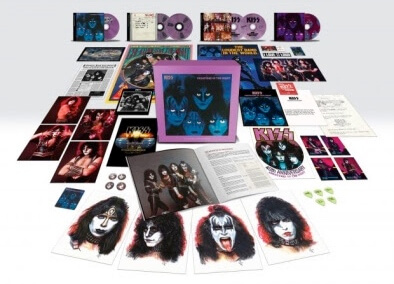
No other musical act has been more adept than KISS at exploiting its fanbase’s desire to re-connect with the past. No surprise, then, that this box-set edition of the band’s final album in makeup contains a trove of posters, photo prints, trading cards, etc., etc.—an obvious effort to tap into nostalgia for the KISS Army fanclub experience that so many fans lived through as kids. To be fair, though, bandleaders Paul Stanley, Gene Simmons and reissue producers Steve Hammonds and Jeff Fura are also clearly aware that KISS fans see themselves as historians. As any KISS diehard can explain at great length, Creatures of the Night marked a difficult turning point in the band’s career, which had basically reached rock bottom going into 1982. What’s laudable about this presentation is its transparency. The messy changeover from founding lead guitarist Ace Frehley to his replacement Vinnie Vincent has been exhaustively documented, but the super-deluxe Creatures allows us a fly-on-the-wall perspective as the band puts on a brave face in the studio in an attempt to right the ship with a heavier, more aggressive approach. Admittedly, the repetition of some of the outtakes gets tedious, while several demos that have long been available as bootlegs are missing. And of course, more detailed credits would have better suited to KISS fans’ insatiable appetite for minutiae. Nevertheless, this set includes a whole concert’s worth of a short-lived but crucial lineup of the band rounding the corner from ‘70s-style arena rock to proto hair metal, while at least two of the demos (“Deadly Weapon” and “It’s Gonna Be Alright”) prove to be needles in a haystack. —Saby Reyes-Kulkarni
The Lemonheads: It’s a Shame About Ray
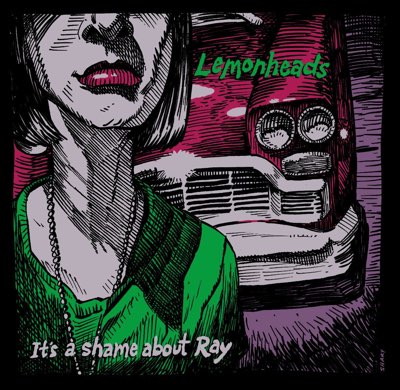
The long-simmering promise of Evan Dando finally boiled over into something close to stardom back in 1992 with the release of Lemonheads’ fifth album It’s A Shame About Ray. On it, the movie star handsome singer/songwriter crystallized a folk-pop sound with a little help from longtime compatriot Juliana Hatfield and bared his lustful and goofy self in his lyrics of dopesick hunger (“My Drug Buddy”), stoned reverie (“Ceiling Fan in My Spoon”), romantic longing and the wide-eyed delight of a toddler out for a ride in a stroller. For the album’s 30th anniversary, Fire Records followed the trail that Dando took before and after its release, gathering demo versions and equally great B-sides like a version of “Shakey Ground,” a song by Australian alt-rock group Smudge, and an acoustic rendition of ABBA’s “Knowing Me, Knowing You” that left this writer weak in the knees when he heard it at the tender age of 17. And, of course, the bonus disc kicks off with the Lemonheads’ massively successful cover of “Mrs. Robinson,” a song originally recorded for another archival release (the 25th anniversary of The Graduate) that became Dando’s biggest selling single. —Robert Ham
Lou Reed: Words & Music
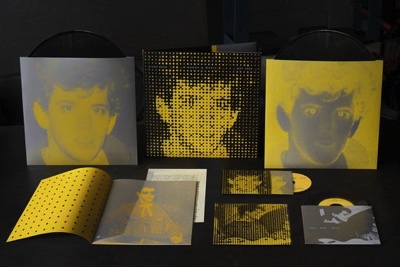
The story of how this reissue came to pass is just as delicious as the music. In his early days as a songwriter-for-hire, Lou Reed attempted to protect his intellectual property by engaging in what has been referred to as a “poor man’s copyright”: mailing a copy of a reel containing a bunch of demos to himself. That tape sat dormant for decades, discovered only as archivists Don Fleming and Jason Stern were digging through Reed’s personal effects following his death in 2013. What they discovered were the sketches for future classics like “Pale Blue Eyes” and “Men of Good Fortune,” rendered roughly with just guitar and vocals. The remastered versions of these tunes, released by Light In The Attic as part of an apparent series of archival releases, feels like getting 4K footage of the Big Bang. It’s the raw material of a whole universe of art being flung into the black to eventually evolve into supernovas. —Robert Ham
Nancy Sinatra and Lee Hazlewood: Nancy & Lee

Nancy Sinatra referred to her collaborative albums with singer/songwriter Lee Hazlewood as “beauty and the beast” due to the fact that their voices aren’t a natural fit for one another. Hearing them joining forces even today, their duets often sound like a nightingale tweeting alongside a bull. But it’s that combination of disparate elements that makes this 1968 album so good, just as Hazlewood’s writing and production and Billy Strange’s arrangements find the places where psych-pop and country can cohabitate. As part of their series of re-releases of Nancy Sinatra’s catalog, Light In the Attic has crisply remastered Nancy & Lee directly from the original tapes to wonderful effect. In addition, the label has tucked a pair of extra tracks on the end, including a sultry version of The Kinks’ “Tired of Waiting For You,” and included a thick booklet that features an long, fascinating interview with Sinatra about her working relationship with Hazlewood. In other words, the complete package. —Robert Ham
Peggy Lee: Norma Deloris Egstrom from Jamestown, North Dakota Expanded Edition
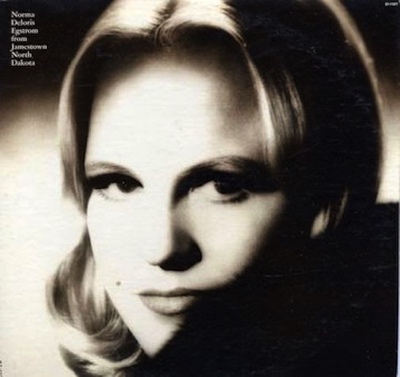
Sure, we expect reissues to come with liners that function as coffee table reading you can come back to over and over, but the best packages drop you into the middle of a story that feels like a chapter in a novel. Setting aside that we also got an actual book this year—a new edition of Peggy Lee’s autobiography—the making of the late singer’s 40th(!) album receives a rich telling by several of the principal participants for this essential 50th-anniversary edition. By 1972, Lee—born Nora Deloris Egstrom in Jamestown, North Dakota (hence the title)—was already a towering figure who had logged 40 years behind the microphone. And, although she stood apart from her contemporaries for writing her own songs, Lee’s final album for Capitol Records showcases that she operated more in the mold of an auteur than what we think of when we hear the term “singer/songwriter.” A concept album of sorts, Norma Deloris Egstrom doesn’t land all that far afield from the classic jazz-singer-with-orchestra template, but Lee’s sense of scope gives the music a singular kind of depth. Out of print for many years, Norma Deloris is suitably honored here as the landmark work of art that it is. —Saby Reyes-Kulkarni
Redd Kross: Neurotica 35th-Anniversary Edition
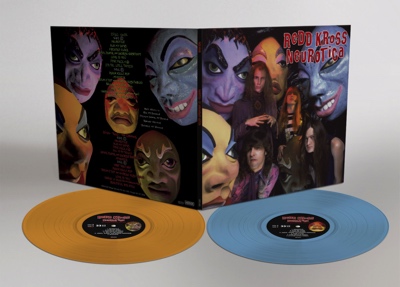
By this point, it seems obvious that classic rock helped influence the bands that would go on to launch the hardcore movement. But in 1987, when the L.A. quartet Redd Kross dove headfirst into power pop and glam with Neurotica, it was practically sacrilegious for punks to wear those influences on their sleeve—a move that Sub Pop co-founder Jonathan Poneman considered “really punk.” Redd Kross may have started out in the same scene that incubated the likes of Black Flag and The Circle Jerks, but their unabashed taste for the sweetness of Beatles harmonies and all manner of pop-culture tchotchke may as well have put them in another world. Produced by original Ramones drummer Tommy Erdelyi, it’s easy to see why Neurotica went on to become a cult classic that galvanized groups like The Replacements, Nirvana, Superchunk and others. This version from Merge Records marks the album’s second reissue, and this time it comes with 12 demos that contrast enough with the finished songs that they justify purchasing the album again. Befitting of the music’s spirit and temperament, this new version doesn’t come with liner notes so much as a napkin note from the band’s original A&R rep Geoffrey Weiss, who writes “Neurotica changed the world, even if it took a little longer than we planned.” —Saby Reyes-Kulkarni
Regina Spektor: 11:11

Regina Spektor’s debut album 11:11 was originally a self-released affair, only available to purchase on CD at her performances around New York and later only as a download. To celebrate its 20th birthday, the record has been remastered by Eric Helmuth and given its first vinyl pressing as either a standalone LP or in a limited boxed set that includes a second disc of live recordings of Spektor made by her father. There’s much to celebrate in this artist’s discography, but this era produced some of my favorite of her music as she found her way within the torch song tradition of jazz, bringing with her an avant-garde aesthetic and a deep appreciation for what indie rock had to offer. The clash of approaches makes for some devilishly entertaining material like the twisty “Back of a Truck” and the funky insta-classic “Pavlov’s Daughter.” —Robert Ham
Robbie Williams: Life Thru A Lens 25th-Anniversary Edition
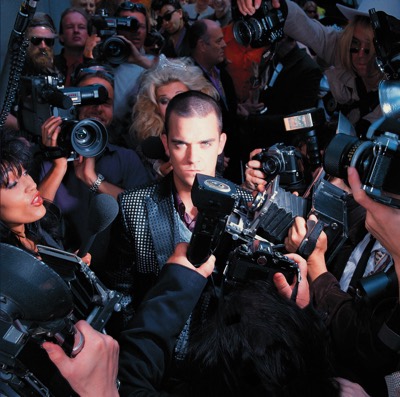
If you’re going to heap a bunch of B-sides and leftover songs onto the re-release of an album, you’d better be sure that those extras are worth listening to. In 1997, singer/songwriter Robbie Williams apparently had inspiration to burn, because even over a whole disc’s worth of B-sides, Williams manages not to lose steam, effectively stretching the album’s appeal to more than twice its length and faltering only when the track sequence repeats the same song in two different languages. Life Thru A Lens was a highly compelling listen in its original form. Williams filled the songs with verve, humor and an obvious penchant for hooks. But this four-CD version achieves the rare feat of seamlessness as it reveals multiple facets of the material. B-sides, demos and complete live sets are de rigeur for reissue packages these days, but Life Thru A Lens reminds us that it takes attention (and great source material) for that format to work. —Saby Reyes-Kulkarni
Seal: Seal Deluxe Edition

Writer Jim Farber’s new liner notes for this four-CD/two-LP set position Seal’s 1991 debut against the iconic grunge records from that same year. While this might seem like a fairly stock angle on a record that’s too unique to contextualize via the trends of its day, Farber’s framing only underscores the power of this album. Looking back three decades later, Seal’s combination of pop, funk, rock and dance hit harder than we might have realized at the time because it seemed so soft in contrast to the other movements Farber mentions (which, to be fair, also include the rave uprising in the UK). If you’ve ever dismissed Seal as pop fluff based on his 1994 hit “Kiss From A Rose,” the UK singer/songwriter’s first effort hits like a karate chop of vulnerability. And this super deluxe edition takes the listener through various stages of completion, from demos to early mixes to remixes to a complete live set from the period. (Seal, by the way, had a kick-ass live band that dove freely into the rock end of the pool and could hold its own with rock acts.) All of these perspectives help us better understand why Jill Sinclair, label exec and spouse of producer Trevor Horn, viewed Seal as a musical powerhouse on-par with Nat King Cole. An elegant remastering job highlights Horn’s midas-touch production—plush and luxurious yet undeniably human. —Saby Reyes-Kulkarni
Various Artists: Life Between Islands: Soundsystem Culture – Black Musical Expression in the UK 1973 – 2006
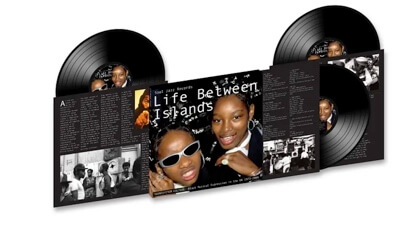
The influence of the music of the Caribbean on multiple generations of British artists has long been examined in books and on film. Earlier this year, the study of this cultural intermingling was given a grander platform through a gallery exhibition at the Tate Britain, which featured visual work from the likes of Claudette Johnson, Aubrey Williams and Donald Locke. To coincide with this, Soul Jazz put together a fantastic collection that serves as a soundwalk through three decades of UK music that moves from smoothed out lover’s rock to jungle to electro to broken beat jazz. The curators of this set wisely pointed their torches at the more obscure corners of these scenes to spotlight lesser known artists like Tabby Cat Kelly, Trevor Hartley and Brown Sugar. It’s a graduate course in Black Studies in audio form to loosen up the hips and minds of the willing student. —Robert Ham
Various Artists: Musicasión 4 1/2

As a military dictatorship tightened its grip on the people of Uruguay, a group of artists led by composer Eduardo Mateo and theater director Horacio Buscaglia produced a series of politically charged performances called Musicasión. In and around those shows, an album was produced in 1971 featuring poetry and spirited folk and psychedelic rock but its release was stifled by the government. Musicasión’s reputation only grew through word-of-mouth by collectors and folks like Juana Molina who fell in love with the album as a child. Molina is, in part, responsible for this celebratory reissue of the album, released on her label Sonamos. It features a remastered version of the original LP and, thrillingly, a second disc of never-before-heard outtakes from the sessions. As with the concurrent Tropicalia movement in Brazil, the music on this collection counters the darkness of Uruguay’s sociopolitical climate with music that is sensual and celebratory. —Robert Ham
Vince Guaraldi: A Charlie Brown Christmas
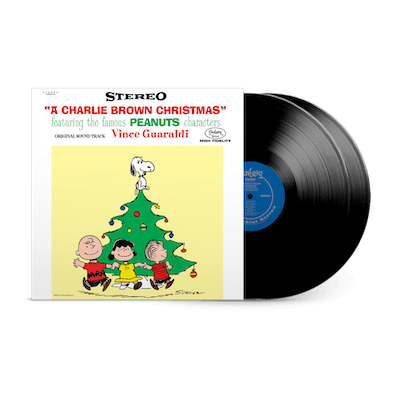
Every year since 2014, a new vinyl pressing of the soundtrack for the inimitable holiday special A Charlie Brown Christmas is released into the world. This is not an unwelcome turn of events as the music, performed by pianist Vince Guaraldi and his trio, hasn’t lost a glint of its tinsel-y shine in over 50 years. But it really hasn’t been until this year that these new issues have felt vital for a collector. The 2022 edition of the soundtrack includes a second LP made up of outtakes from the original recording sessions, offering fans a chance to hear how Guaraldi developed his solos and his approach to standards like “Greensleeves” and “O Tannenbaum.” And there’s something wonderfully humanizing about hearing the metronome and false start in the first take of “Linus & Lucy,” the bouncy bop that should have been included on the Voyager golden disc. —Robert Ham
William S. Fischer: Circles

William S. Fischer is best known for working in the shadow of big names in jazz and R&B like Roberta Flack, Herbie Mann and Bette Midler. Real heads know that the multi-talented artist made a few records of his own in the ’70s and that each one has some rare delights cut into the grooves. His 1970 debut, recorded with heavy hitters like drummer Billy Cobham and bassist Ron Carter and five cellists for Mann’s Embryo label and newly reissued by Real Gone, sticks to a New Age funk vibe with songs like “Circle” and “Chains” speaking to spiritual transcendence and personal freedom. But the truly fascinating moments on Circles are the two tracks where Fischer cuts loose on a Moog synthesizer for extended instrumental interludes that are far gone and out. I’m not sure how easily they mesh with the watertight beats and hip-swiveling rhythms on the rest of the LP but I am so happy they are there to shock me out of my sweaty dance party glow. —Robert Ham









